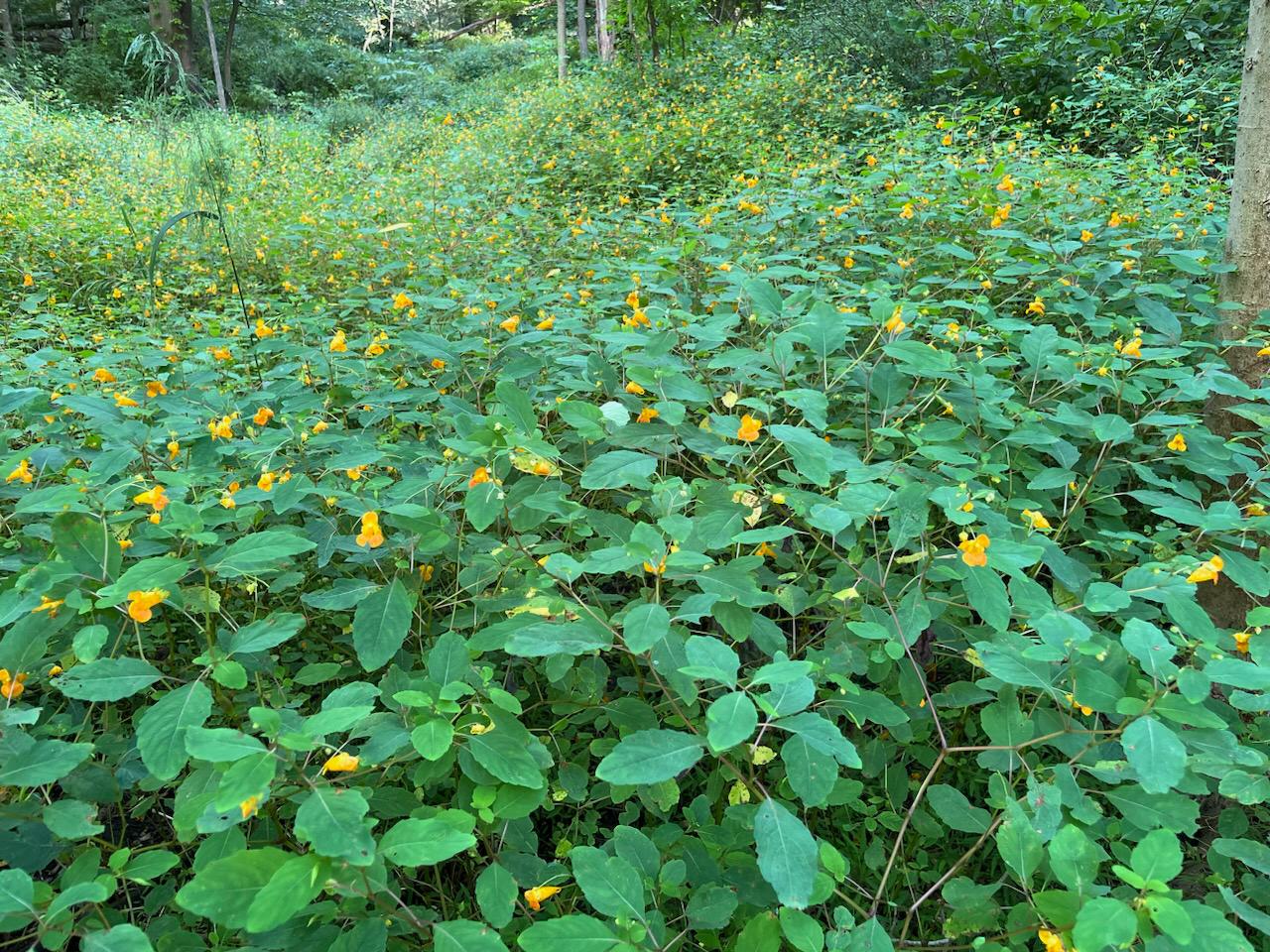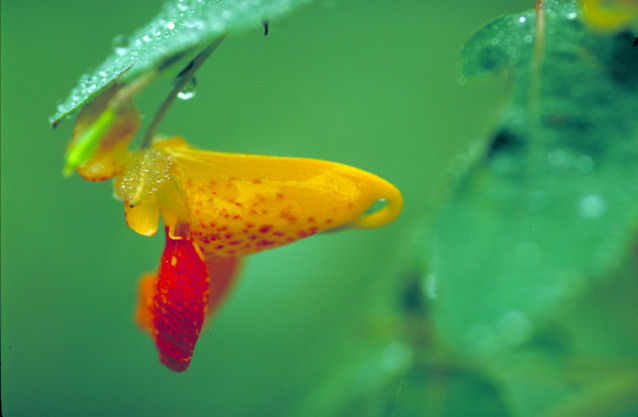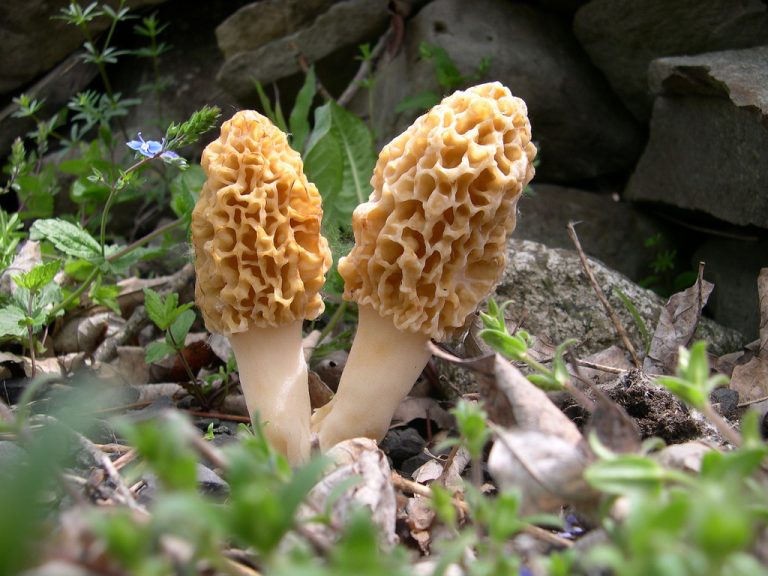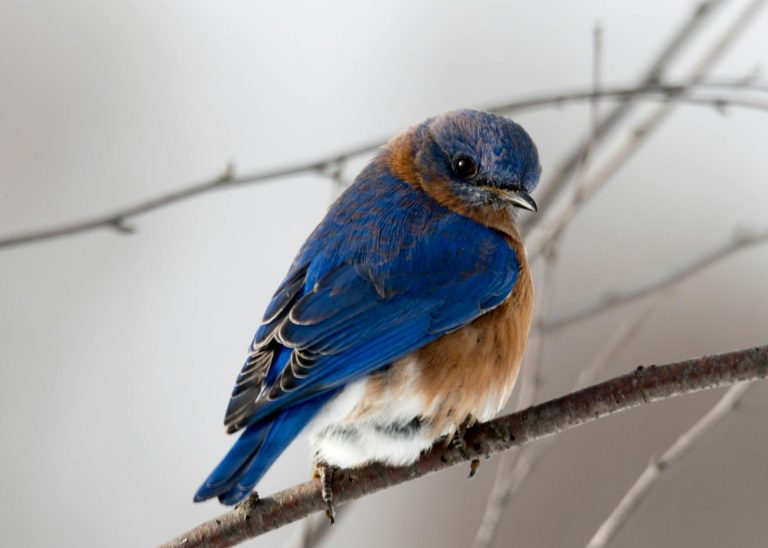While it is not exactly ornamental, jewelweed has many attractive qualities and applications that can earn it a place in your garden. This North American native is suited to soggy, shaded areas that many other plants won’t tolerate. Its preference for mosquito-ridden, wooded areas that also host poison ivy could be called a happy coincidence or perhaps a divine arrangement — since its chief medicinal use is to soothe skin issues like bites and rashes.
Jewelweed plant
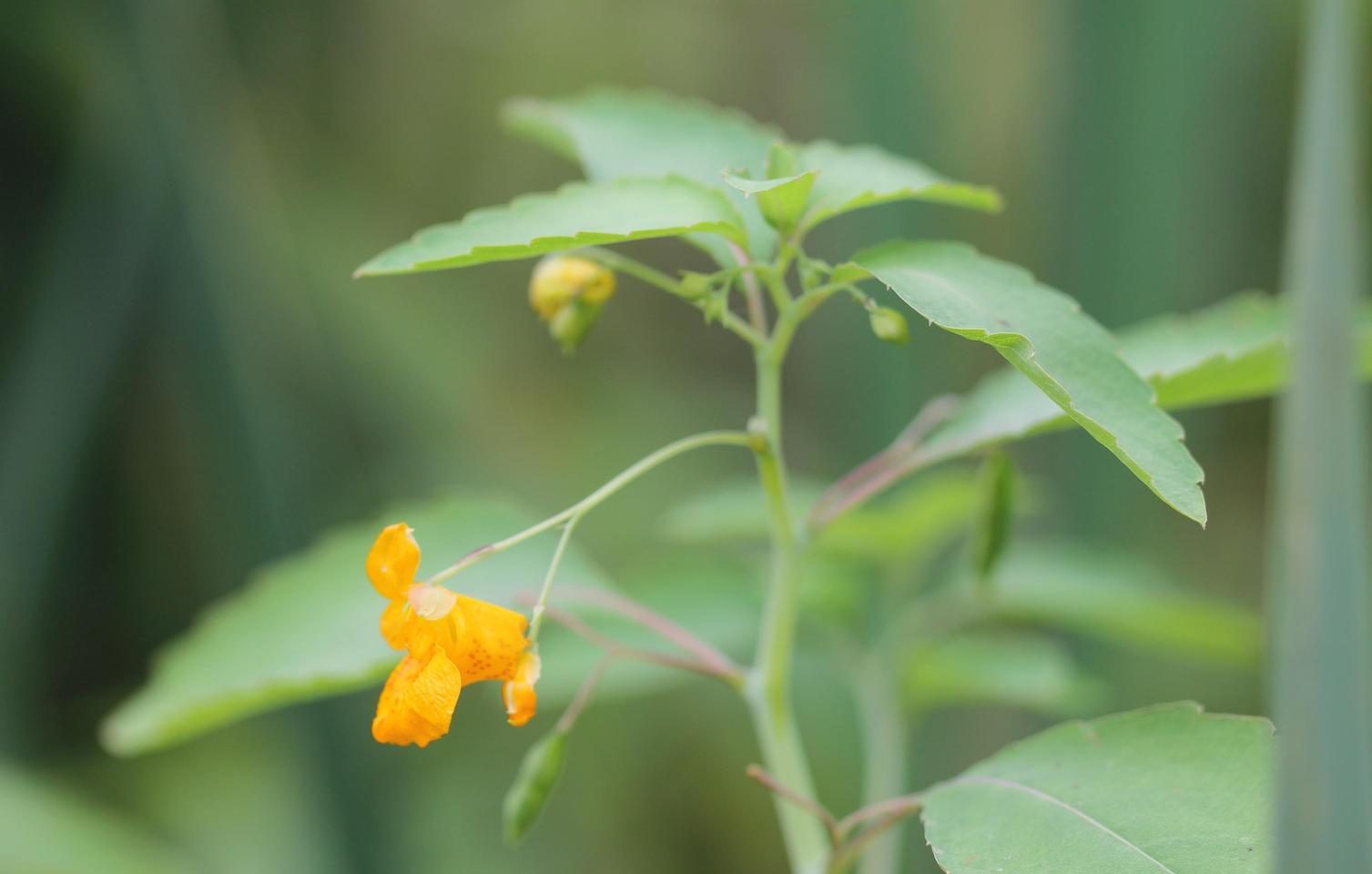
Jewelweed (Impatiens capensis) is an herbaceous annual wildflower, often found along wooded streams and ponds or disturbed areas with rich, soggy soil. It is one of over 1,000 species of Impatiens, many of which have similar soothing properties.
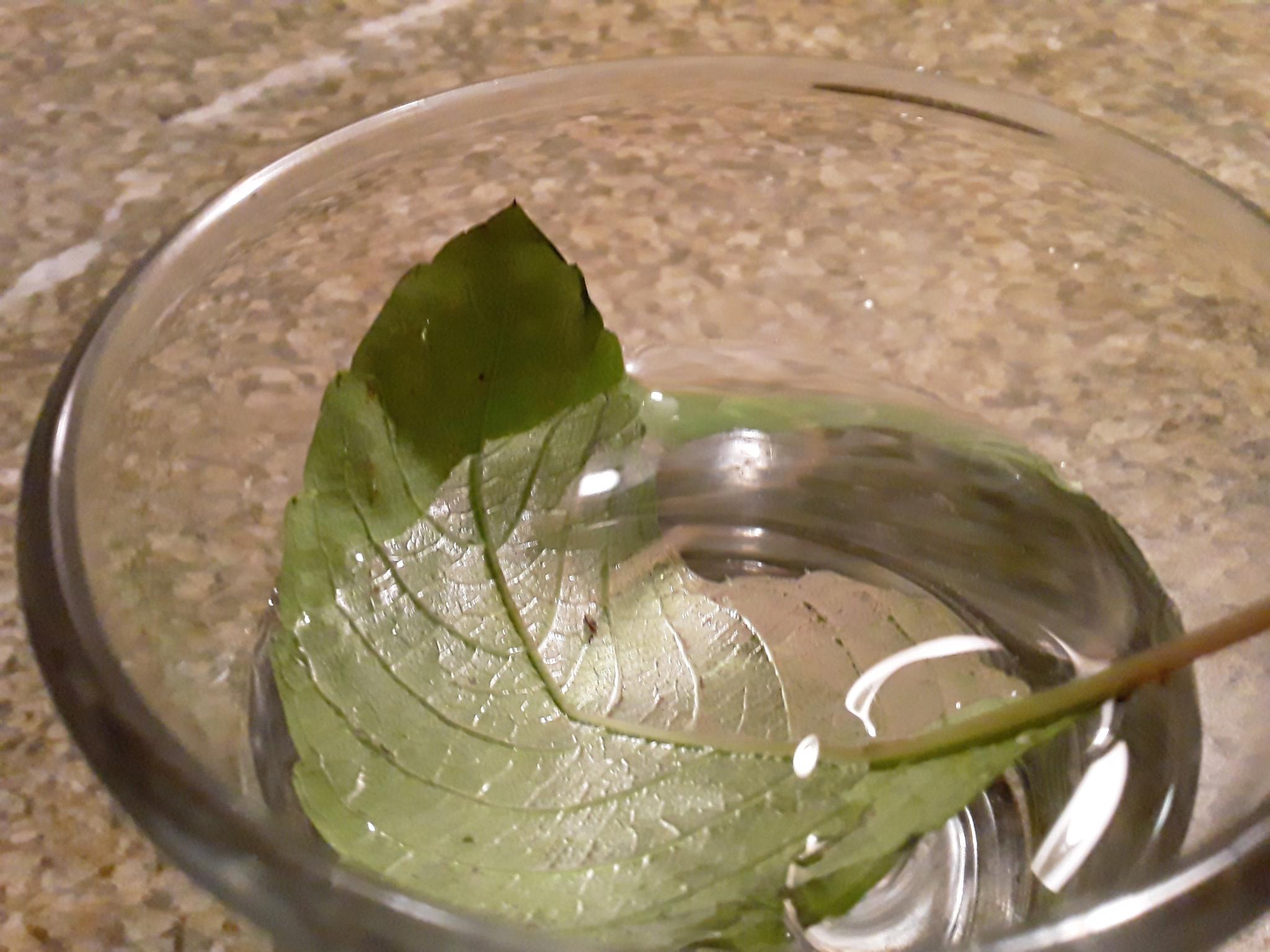
The jewel in its name may refer to any of its three apparent treasures: the beautiful, snap-dragon-like flower, that droops like a pendant in stunning hues of orange or yellow; the brilliant silver shimmer displayed on its leaves when they are immersed in water; or the tiny, green, faceted gems that burst from ripe seed pods — giving rise to a second common name “touch-me-not.”

These self-sowing seeds germinate in early spring, with seedlings emerging shortly after the final frost. Plants grow to a height of two to five feet, sporting tender, bluish-green leaves on semi-translucent stems.
The stems are fairly-fragile, hollow stalks, which can produce a sound when blown into — giving the plant yet another common name: “whistle weed.” Small, orange flowers begin to bloom by midsummer, attracting long-tongued bees, butterflies and hummingbirds.
Success
You are now signed up for our newsletter
Success
Check your email to complete sign up
Although the plant can readily take over an area that suits its needs, it is easily controlled. The shallow root system does not resist pulling, and simply walking through a planting can destroy much of the fragile vegetation.
Traditional uses
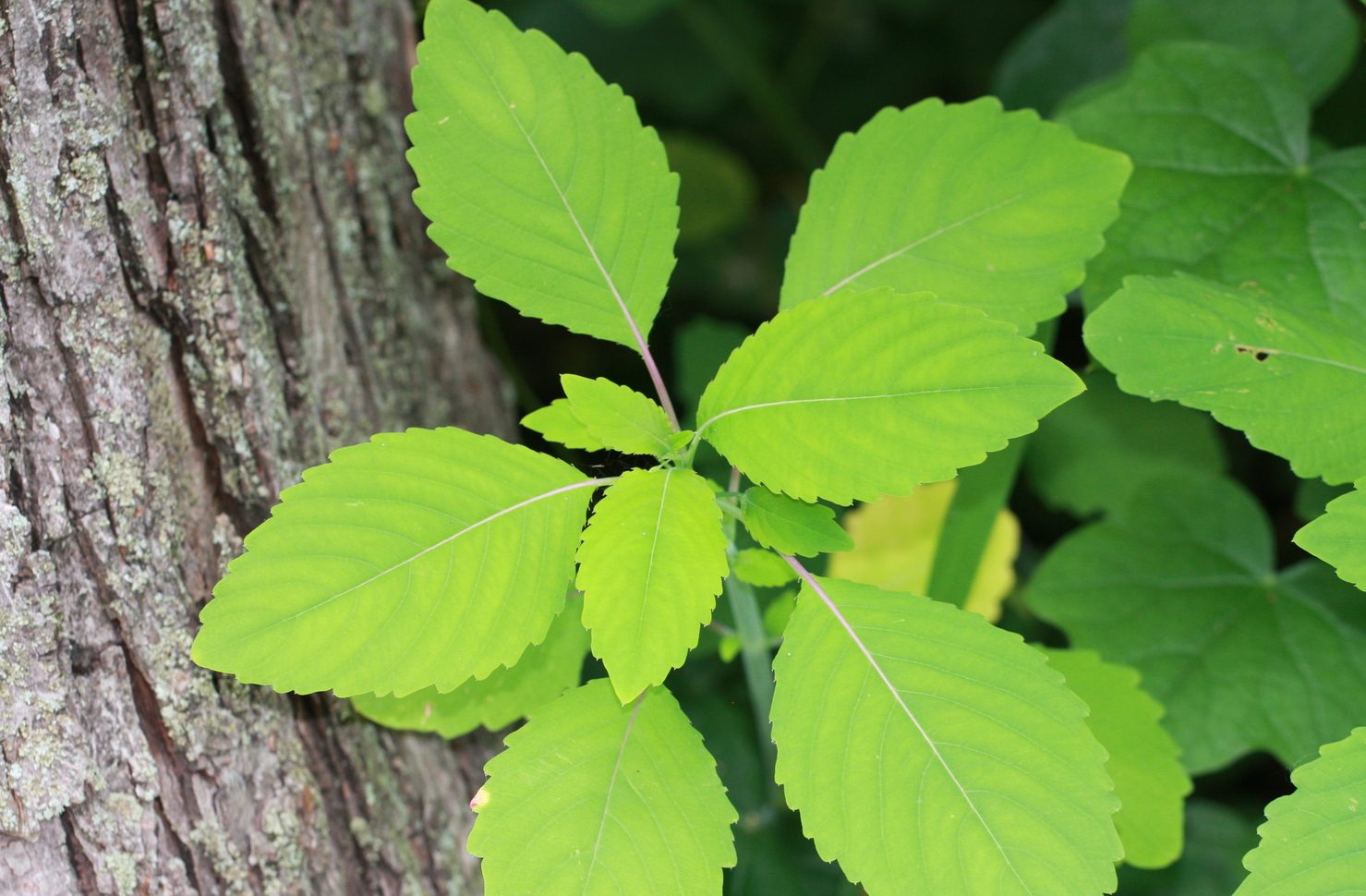
Besides consuming (in moderation) the nutritious young foliage and walnut-flavored seeds, jewelweed was historically used by Native Americans as an herbal remedy for a variety of ailments. The liquid sap from the leaves and stems was commonly applied to itchy or irritated skin for relief from insect bites and stings, as well as plant irritants like stinging nettle, poison ivy, poison oak, and poison sumac.
The plant was also applied as a remedy for digestive, orthopedic, pulmonary, kidney, liver and urinary conditions, as well as a treatment for postpartum pain and bleeding, bruises, rheumatism and regulating menstruation.
The Japanese historically used the juice from the flowers to soothe itchy and burning rashes, while the Chinese traditionally used the plant topically to reduce swelling and joint pain.
Medicinal properties
Today, you can see jewelweed as a common ingredient in soothing salves and lotions.The plant is known to have antifungal, anti-inflammatory, antimicrobial and — when taken internally — diuretic and sedative properties.
Limited studies show that the use of fresh jewelweed effectively reduces itching and rash from poison ivy, but the effectiveness was reduced in prepared ointments.
The root of jewelweed has been found to contain naphthoquinone (an antifungal compound), anthraquinone (a cancer inhibitor), and spinasterol (an antimutagen). Coumarin derivatives scopoletin (an eosinophil activator) and isofraxidin (a sedative) were also isolated from root cultures.
The seeds contain cysteine-rich (antimicrobial) compounds.
WARNING: The plant is high in oxalic acid, and should only be consumed in moderation. It is recommended to use only young leaves and stems, and pre-boil them twice for 10 minutes to reduce the concentration of oxalic acid.
Growing jewelweed

If you border a wet, shaded area, you should be able to grow jewelweed. It does best in continuously moist soil that is rich in organic matter.
Jewelweed will not tolerate full sun, heat or drought, so find an area with full or partial shade that has a regular water supply. Early morning sun can work, but avoid placing it where it will be exposed to blazing heat later in the day. Amend poor soil with compost to achieve a neutral to slightly acidic pH.
Jewelweed is a delicate plant that will not transplant well, but it grows easily enough from seed. You can purchase jewelweed seeds online, but it’s much more fun to find them on a walk through the woods. To collect seed, place a container around the ripe pods before touching them to release the spring that sets the seeds flying.
Sow seeds directly, about ¼ inch deep, in the area you wish to populate. Do this in summer or fall, so they will receive the necessary cold stratification naturally through the winter. Sowing them thick will give you taller plants, as they can use each other for support.
Seeds will germinate readily in moist soil early in the spring. Jewelweed is a good competitor against non-native, invasive plants and other weeds. Once established, it will continue to self-sow, ensuring a lush, lasting stand of this useful herb.

While jewelweed mainly refers to our native species with orange spotted flowers, we also have a yellow jewelweed (Impatiens pallida) that has a similar growth habit and favors similar conditions. The flowers are somewhat larger — something to consider if you are planning to cultivate jewelweed.
Home remedies with jewelweed
Most herbalists prefer to use jewelweed fresh — all the more reason to grow it at home! The crushed leaves and stems make the perfect poultice for on-the-spot relief from bug bites and rashes.
The next best thing is frozen jewelweed. Harvest enough to fill your blender, add some water and pulse until smooth. Strain out the fibrous plant material and freeze the juice in small containers, or fill an ice cube tray and empty them into a bag after freezing. The juice (frozen or thawed) can be used directly on irritated skin.
The plant can also be gathered and dried to make salves and soaps, or preserved in tinctures – for ready-relief from poison ivy and other enduring rashes.
Jewelweed tincture for topical use (recipe)
- Chop enough fresh jewelweed (leaves, stems, flowers) to pack a mason jar three quarters full.
- Enhance the soothing quality of your tincture by adding some chopped comfrey and plantain leaves.
- With 91% rubbing alcohol, just cover the plant material, leaving a little space at the top.
- Secure a leak-proof lid and place the jar in a sunny window.
- Shake daily for three weeks.
- Strain the liquid tincture into spray bottles for easy application.
Application of jewelweed
Whether fresh, frozen or preserved in a preparation, jewelweed is most commonly used topically on rashes, bites, stings, and other skin irritations.
It can be used as a treatment against fungal conditions like athlete’s foot, dandruff and ringworm; and also to relieve joint pain, isolated swelling or inflammation.
Given jewelweed’s many medicinal properties, it is no surprise that it also has other healing potential. Recent research in Japan has uncovered alpha-reductase inhibitors present in Impatiens balsamina that may help treat (or prevent) breast, testicular and prostate cancer.
Jewelweed also has a very practical application in reclaiming areas overrun by invasive plants like garlic mustard and Japanese knotweed.
